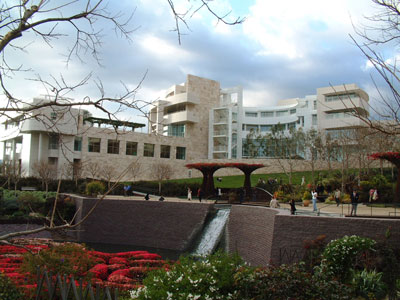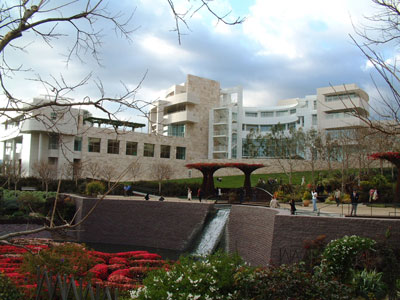Feng Shui – Ancient Chinese Practice
Feng Shui (also: fengshui; Chinese: Fēng Shuǐ) literally means “wind and water.” Pronounced “fung shway” or “fung shoi” (but often mispronounced in English as “feng shu-i”), Feng Shui is the ancient Chinese practice of placement and arrangement of space to achieve harmony with the environment. The practice is estimated to be more than three thousand years old.
Traditional or classical Feng Shui is an ancient Chinese belief system that addresses the layout of cities, villages, dwellings, and buildings. It is erroneously identified as geomancy, an unfortunate misnomer courtesy of 19th-century Christian missionaries.
Traditional or classical Feng Shui always involves the use of a Luopan compass and a systematic method involving iterated steps. The New Age versions – Black Sect, Pyramid, Fusion, Intuitive, etc. – typically do not. The Black Hat Sect school of Feng Shui, which began in the 1960s, heavily flavored by the New Age movement, explains Feng Shui as the arrangement of objects within a home to obtain an optimum flow of qi; however this qi has never been observed and many believe that certain, corrupt interior designers have abused this concept to profit from naïve consumers. During the same time, Pyramid Feng Shui began a western adaptation of classical Feng Shui to assess how an individual experiences his environment.
In its original expression:
- Wind that which cannot be seen – invisible.
- Water that which cannot be grasped – elusive.
Feng Shui has its roots in the Chinese reverence for nature and belief in the oneness of all things. The assumption is that the key to living a harmonious life is to reflect the balance of nature in their daily lives. This is most easily understood by the following concepts: Yin and Yang, qi, and the Five Elements – Wood, Fire, Earth, Metal and Water. In rural China, however, according to recent fieldwork by Ole Bruun, qi flow is rarely mentioned. Nevertheless, Feng Shui is used to increase wealth, health, and harmonious relationships.
Classical Feng Shui began as an interplay of construction and astronomy. Early Yangshao houses at Banpo were oriented to catch the mid-afternoon winter sun at its warmest, just after the solstice. (Some tribes in southern China still refer to this month as “House-building Month.”) Professor David Pankenier and his associates performed retrospective computation on the Chinese sky at the time of the Banpo dwellings (4000 BCE) to show that the asterismYingshi (Lay out the Hall, in the Warring States period and early Han era) corresponded to the sun’s location at this time. Several hundred years earlier the asterism Yingshi was known as Ding. It was used to indicate the appropriate time to build a capital city, according to the Shijing.
The grave at Puyang (4,000 BCE) that contains mosaics of the Dragon and Tiger constellations and Beidou (Big Dipper) is similarly oriented with cosmological accuracy along a north-south axis.
The tombs of Shang kings and their consorts at Xiaotun lie on a north-south axis, ten degrees east of due north. The Shang palaces at Erlitou are also on a north-south axis, slightly west of true north. These orientations were obtained by astronomy, not by magnetic compass.
All capital cities of China followed rules of Feng Shui for their design and layout. These rules were codified during the Zhou era in the Kaogong ji (Manual of Crafts). Rules for builders were codified in the Lu ban jing (Carpenter’s Manual). Graves and tombs also followed rules of Feng Shui. From the earliest records, it seems that the rules for these structures were developed from rules for dwellings.
The oldest known Feng Shui device consists of a two-sided board with astronomical sightlines. Liuren astrolabes have been unearthed from Qin-era tombs at Wangjiatai and Zhoujiatai. These devices date between 278 BCE and 209 BCE. Today Feng Shui practitioners can select from three types of Luopan or Feng Shui compasses: San He (the so-called “form school,” although the compass name means “Triple Combination”), San Yuan (the so-called “compass school,” although the compass name actually refers to time), and the Zong He that combines the other two.
Classical Feng Shui
Classical Feng Shui is still considered important in some segments of modern Chinese culture, especially Malaysia, Hong Kong and Taiwan. It is less common among educated Chinese in the People’s Republic of China as it is often thought of as peasant superstition. Since the mid-20th century, it has been illegal in the PRC because of the propensity for fraud. This all came about because of the Cultural Revolution that set about destroying most of the old culture of China. It has been kept alive in books and practitioners in Taiwan and Hong Kong. In the 1960s, Feng Shui was introduced in the West. Regardless of the country of practice, East or West, businesses typically use Feng Shui to increase sales and boost morale. Homeowners have come to use Feng Shui in an attempt to bring peace and harmony to their surroundings.
Feng Shui promotes the searching for places where Chi forms or accumulates as these places are perfect to live happy, prosperous, successful lives. In Feng Shui winds are noted as being bad as they scatter Chi rater than accumulate it, so when searching for a site bypass any that are wind swept.
Post-modern revival

The Getty Center in Los Angeles, the best articulation of 1990s style feng shui influence and theory on the American west coast.
With the opening up of China to the west, principally first from Hong Kong and Macau, feng shui became increasingly known and also practiced by western “hongs” or trading companies to satisfy local business communities, and also to encourage luck in business. Feng shui masters have always influenced the great buildings in Hong Kong – both for good and bad ends: the famous Bank of China Tower on Hong Kong Island, with its blade-like design, was said to be a deliberate curse upon the Government House and its British administration. Still, western scholars and new-age spiritualists rediscovered feng shui and led to a dramatic and often erratic revival of the practice on the North American west coast California and British Columbia from the early 1990s.
Architects and landscape designers are sometimes called upon to take Feng shui principles into account, particularly in regions and cities where there are large Chinese populations. This has increased in recent years, and can be seen as part of the wider trend towards ‘humanising’ what is seen as the ‘inhuman’ spaces of Modernism.
Feng shui vernacular includes: fountains, the use of curves rather than hard straight lines, alignment of entrances with the best views, natural materials, and is best seen in such buildings as the Getty Center in Los Angeles by Richard Meier which stands as the best articulation of 1990s style feng shui influence and theory on the American west coast.

no thank you
you have an amazing weblog right here! would you prefer to make some invite posts on my blog?